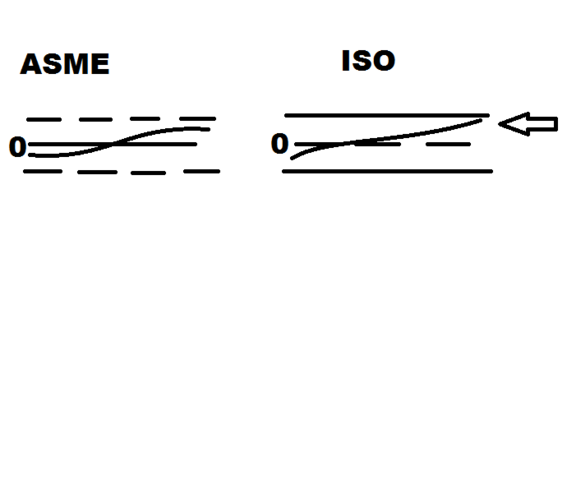Your Products have been synced, click here to refresh
Your Products have been synced, click here to refresh

VinniUSMC Yes, I agree that the standard does not specifically tell you how to report the bi-lateral profile deviation,
and KIRBSTER269, what you wrote does make sense, from a certain point of view. As Vinni points out your understanding is also not specified as THE way to report it.
Consider this:
Does the standard specifically tell us how to report position deviation either? Does it say to calculate the radial deviation and multiply it by two?
I just spent ~30 minutes using search terms like multiply, hyp, calculate, circular, radial, two, diametral and did a visual scan of the true position sections of the 94 standard, and did not find anything that tells us how to calculate and report the positional deviation of a hole location. (You might be able to argue that the standard implies how it should be reported.)
Yet everyone knows that we do it by : =(SQRT(A^2+B^2))*2 (to state it as an excel formula).
Why do we report it that way? Because we know that we are dealing with a cylindrical tolerance zone and that if we dont double it, we would be reporting it as if it were a radial tolerance zone.
(Note, I was first exposed to true position at a military manufacturer 35 years ago who actually used Radial true position on their prints. I haven't seen anyone else use it since then).
Likewise, it makes sense that with a bi-lateral tolerance zone whose width is centered on a plane or line, you would relate the greatest deviation (which is either on one side or the other) back to its width tolerance zone by doubling it.
I agree with Don day of Tec-Ease. Doubling it only makes sense.
| © 2025 Hexagon AB and/or its subsidiaries. | Privacy Policy | Cloud Services Agreement |